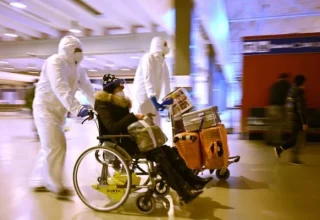
ISLAMABAD, July 31(ABC): A new study explores the relationship between varying levels of physical activity, being sedentary, and the risk of stroke.
This study focuses strictly on the latter, unlike other studies that consider both heart disease and stroke.
Medical News Today spoke with study co-author and Distinguished Professor Virginia J. Howard, Ph.D. with the School of Public Health at the University of Alabama at Birmingham.
“While they [heart disease and stroke] do share some risk factors, some they do not,” Professor Howard explained.
In addition, MNT also spoke with study co-author Dr. Steven P. Hooker, Ph.D. at the College of Health and Human Services at San Diego State University.
“Objective measures using an accelerometer have not been used to look at the relationship between these variables,” said Dr. Hooker. “Light intensity physical activity has not been routinely observed. Bouts of sedentary time is also a newer way of looking at the data in addition to overall sedentary time.”
Professor Howard also noted that while it is challenging to quantify the amount and intensity of physical activity needed to prevent stroke, this study brings forth some significant progress.
The study finds less time spent being sedentary and more time being physically active — even at light or moderate intensities — is associated with a reduced risk of stroke.
According to the study:
- Moderate to vigorous activity produced the most substantial reduction in the risk of stroke.
- Even light physical activity lowered the chances of a stroke.
- Spending great amounts of time being sedentary increases the risk of stroke.
The study is published in JAMA Network OpenTrusted Source.
Physical activity and stroke risk
Activity is divided into three categoriesTrusted Source: light, moderate, and vigorous. Researchers measured activity levels in METs, or “metabolic equivalents.” One MET is the amount of oxygen consumed while at rest.
Light activity (two METs) includesTrusted Source stretching, walking slowly, browsing in a store, wandering your office, standing, preparing food, washing dishes, playing piano, or making the bed.
The study found that every hour spent performing light activities resulted in a 14% reduction in the chances of having a stroke.
Increased activity level and stroke risk
Moderate activities (three to six METS) include walking briskly, playing doubles tennis or shooting a basketball, biking on level ground, catch-and-throw sports, climbing stairs, washing windows, sweeping, mopping, or vacuuming floors, slow dancing, scrubbing a bathtub, carrying a small child, washing your car, or gardening.
In the vigorous category (more than six METs), think of activities such as running (faster than more than five miles per hour), playing singles tennis, basketball, or soccer, swimming, jumping, carrying heavy loads, jumping rope, energetic play with children or dogs, or heavy gardening such as shoveling or hoeing.
According to the study, 175 minutes per week of moderate-to-vigorous activity was associated with a 43% reduction in the risk of having a stroke in adults ages 45 years or older.
Being sedentary and stroke risk
The study explored how hours of sedentary time may affect the risk of stroke and the risk associated with shorter periods of consecutive sedentary behavior, or “bouts.”
“Most midlife and older adults spend greater than 65% of their time in sedentary behaviors. Our sample exhibited even higher proportions of the time they were awake being sedentary, 71% to 84%,” Dr. Hooker explained.
The study suggests that if one’s daily sedentary time is 13 hours or greater, there is a 44% increased risk of stroke. In addition, bouts of sedentary time greater than 11 minutes were associated with a 53% increase in the risk of stroke, compared to shorter bouts of sedentary time of fewer than 8 minutes.
Takeaways
“Our results show that periodically breaking up periods of sedentary behavior with even light-intensity physical activity can reduce risk of stroke.” Dr. Hooker advised. “Intentionally getting up and accumulating four-to-five hours a day of light intensity activities is beneficial. Even better is incorporating moderate to vigorous intensity activities, if possible.”
He suggested making some small lifestyle changes that can lead to a positive impact on one’s health:
- Walk around the house during TV commercials
- Set a timer to stand or move around every 20-30 minutes during a work day
- Increase light-intensity physical activity by walking more
“This does not take a lot of time, but it does take purposeful thought and planning,” said Professor Howard.
“Changing position and doing different movements such as walking across the hall or room or around outside, vacuuming or dusting or playing catch, having a walking telephone conversation — especially when you are on hold — is a great thing to do,” she added.
She also suggested “walk and punch, and walk and march” to increase your level of physical activity.
“That is, while you are walking, making punching movements with alternating arms.


























